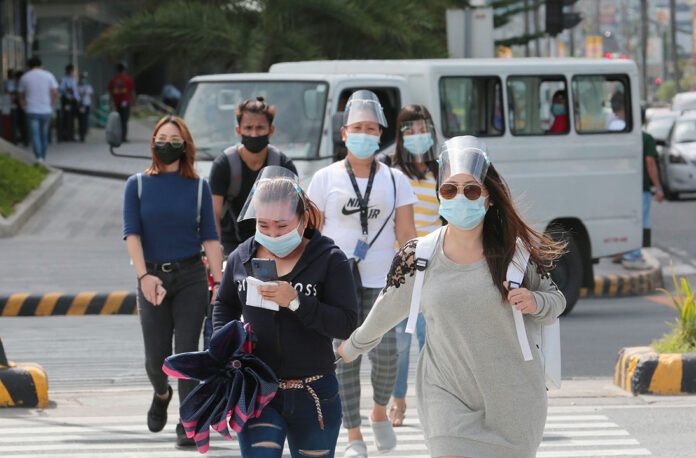MANILA, the Philippine capital and nearby cities might become at low risk from the coronavirus by the end of October amid decreasing infections, researchers from the country’s premier university said on Sunday.
Virus cases in the capital region have peaked at a seven-day average of 2,000, Octa Research Group fellow Fredegusto P. David told ABS-CBN’s Teleradyo.
“Based on our criteria, the classification for the National Capital Region might shift to low risk by the end of October,” he said in Filipino. “We don’t see any threatening variant of concern that could enter the country. I think this trend will continue until Christmas.”
Hospital occupancy in Metro Manila is expected to decline he said. The entire country daily average could fall to less than 10,000 in the coming weeks from 11,000 now, he added.
The capital region now has a coronavirus disease 2019 (COVID-19) reproduction number of 0.6, or the number of people infected by a single virus patient, while the positivity rate is 13%, Mr. David said.
He traced declining infections to herd immunity. At least half of the capital region’s adult population has been fully vaccinated against the coronavirus.
Meanwhile, the government on Sunday took delivery of 918,450 doses of the coronavirus vaccine made by Pfizer, Inc., the state-owned People’s Television Network said in a Facebook post.
The shipment was donated by the United States under a global initiative for equal access, it said.
The Philippines last week recorded daily virus cases of fewer than 10,000 for two straight days.
The Health department earlier cited a downtrend in virus cases in Metro Manila, even as cases increased in the Bicol, Mimaropa and Zamboanga Peninsula regions.
Cagayan Valley, the Cordillera Administrative Region and Ilocos Region remained at high-risk, Health Undersecretary Maria Rosario Vergeire told an online news briefing on Friday.
Congressmen have criticized OCTA Research for what they called its inaccurate coronavirus projections. The group has said it uses data from the Department of Health.
The Philippine Food and Drug Administration (FDA) on Friday said it had approved American and Swiss-developed Ronapreve for the emergency treatment of the coronavirus.
The drug may be used for people aged 12 and above, FDA Director-General Rolando Enrique D. Domingo told an online news briefing.
Ronapreve could cut the risk of hospitalization and death from the coronavirus by at least 70%, he said, citing the results of initial clinical trials.
An inter-agency task force also cut the quarantine period for inbound travelers from countries with low to medium coronavirus infections.
Fully vaccinated travelers need only to undergo a five-day quarantine at a facility and five more days in their homes, presidential spokesman Herminio L. Roque, Jr. told a televised news briefing on Friday.
The requirements for unvaccinated people are higher at seven days at a facility and seven days at home, he added.
Foreign passengers must pre-book their own accommodations for a quarantine period of at least six days for the fully vaccinated, and at least eight days for unvaccinated ones.
The old requirement was a 10 to 14 days of quarantine inside a quarantine facility.
Tourism Secretary Bernadette Romulo-Puyat said this was an “encouraging development for the country’s tourism industry.”
It would make travel more appealing to tourists, she said in a statement. “The faster we are able to adjust to this situation, the faster we can bounce back better and regain our position in the global tourism market.” — K.A.T. Atienza

